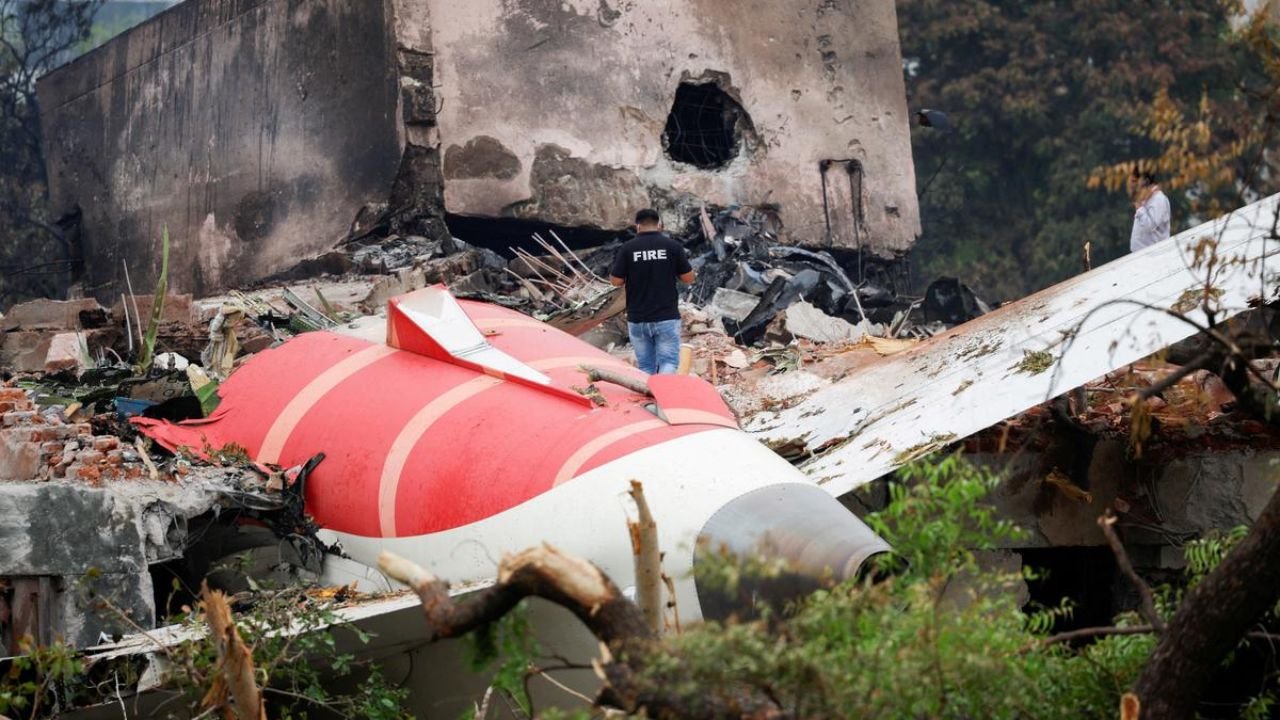On a sad Thursday afternoon, Air India Flight AI171, a Boeing 787-8 Dreamliner, crashed just after taking off from Ahmedabad airport. 241 people on the plane died, and many buildings on the ground were also damaged. This was the first time a Boeing 787-8 had a deadly crash since it started flying in 2011.
Experts from India, the US, and the UK will investigate to find the exact cause of the crash. But pilots and aviation experts have some ideas about what might have gone wrong during the first 30 seconds of the flight.
Why Takeoff Is So Difficult
Takeoff is one of the hardest parts of flying. The pilots have to control the plane very carefully as it moves from the ground into the air. If something goes wrong during takeoff, it is very dangerous because the plane is still very low and there is little time to fix problems.
Flight AI171 took off at 1:39 PM with 242 people on board, including a very experienced captain with over 22 years of flying and 8,000 hours of flight time. The plane was full of fuel to fly all the way to London.
Right after takeoff, the pilots sent a mayday call, which means they were in trouble. The plane could not go higher than about 625 feet, then it started to fall and crashed into a neighborhood, causing damage and deaths on the ground.
What Might Have Caused the Crash?
Both Engines Stopped Working – A Very Rare Problem
One idea is that both engines stopped working. This almost never happens with modern planes but is very dangerous, especially during takeoff when the plane is low and moving slowly.
Why Could Both Engines Stop?
Possible reasons include dirty or bad fuel, something blocking the fuel system, or a big mechanical problem with the engines. The Boeing 787-8 engines are usually very reliable, but no machine is perfect. If both engines stop, the plane has a backup system called the Ram Air Turbine (RAT) to help, but in this case, the plane was too low and did not have enough time to recover.
Similar Events Before
The most famous case like this was in 2009, called the “Miracle on the Hudson.” A US Airways plane lost both engines after hitting birds but managed to land safely on a river. Unfortunately, Flight AI171 was not so lucky.
Bird Strikes: A Known Hazard at Ahmedabad Airport
Ahmedabad airport has a documented history of bird strikes, with hundreds reported over recent years. Bird strikes can severely damage engines or critical parts of the aircraft.
Bird Strike Statistics at Ahmedabad Airport:
| Year | Number of Bird Strikes | Percentage Increase Year-over-Year |
| 2018-2019 | 80 | – |
| 2019-2020 | 90 | 12.50% |
| 2020-2021 | 100 | 11.10% |
| 2021-2022 | 130 | 30% |
| 2022-2023 | 175 | 35% |
Why Bird Strikes Matter:
At low altitude during takeoff, a bird strike can lead to sudden loss of thrust if the bird is ingested into the engines. Since AI171 struggled immediately after takeoff, bird strike is a plausible theory.
Expert Opinions:
However, experts warn that bird strikes rarely cause catastrophic failure unless both engines are affected simultaneously, which is even more uncommon.
Flap Setting: Did This Contributory Role?
Flaps are essential to the takeoff, they provide more lift to the wing at a lower speed. When the flaps are not in the proper position, then a heavily loaded aircraft may not be able to produce sufficient lift to climb safely, particularly during hot weather when the density of the air is low.
Takeoff Flap Warning Systems:
Boeing 787-8 has a takeoff Configuration Warning System which notifies the pilots when the flaps have not been set correctly. Had the flaps been retracted or in the wrong position, a warning would have given.
Was There a Human Error?
Despite the fact that some specialists suppose that flap misconfiguration might have caused the crash, this assumption has not been proven yet. There are pre-takeoff checklists and procedures precisely to avoid such mistakes.
Environmental Factors:
Ahmedabad had been having temperatures of around 40C (104F), which reduces the air density thus necessitating the increases in flap settings and engine thrust to attain safe takeoff characteristics.
Pilot Response and Experience: Did It Play A Role?
Captain Sumeet Sabharwal had an experience of more than 20 years of flying and had clocked thousands of hours in flying aircrafts. Although human error may not be completely excluded, the experts indicate that the time interval between the takeoff and the crash was too short, approximately 30 seconds, and thus did not leave much time to take any corrective measures.
Non-engine Technical Failures
The other potential causes are the mechanical or system failures that are not associated with the engines, e.g. flight control system failure, electrical failures, or fuel delivery system failures.
What says the Black Box?
The flight data recorder and the cockpit voice recorder, or the so-called black box, will give essential information as to what occurred in those 30 seconds that proved fatal. Researchers will examine engine data, control measurements, warning indicators and communications in order to reconstruct the events.
What Happens Next in the Investigation?
The investigation team, including Indian authorities and aviation experts from the US and UK, will conduct:
- Black Box Analysis: Flight data and cockpit voice recorders will be studied in detail.
- Debris Examination: Investigators will look for mechanical failures or signs of bird strikes.
- Maintenance History Review: Aircraft maintenance and service records will be audited.
- Weather and Environmental Conditions: Analysis of how heat and weather affected performance.
- Interviews with Survivors and Witnesses: Gathering more data on what was experienced or seen.
Conclusion: The Complexity Behind a 30-Second Crash
The crash of Air India Flight AI171 is a tragic reminder of how fragile the moments after takeoff can be. A combination of rare mechanical failure, environmental factors, and operational challenges may have contributed to the disaster. While the precise cause remains under investigation, aviation experts continue to emphasize the exceptional safety record of the Boeing 787-8 Dreamliner and the professionalism of the flight crew.
As the investigation progresses, families of victims and the global aviation community await answers to ensure lessons are learned and similar tragedies are prevented in the future.






